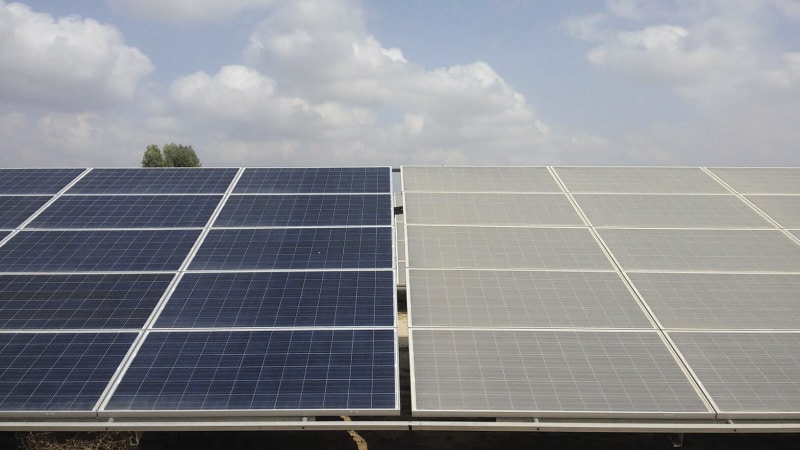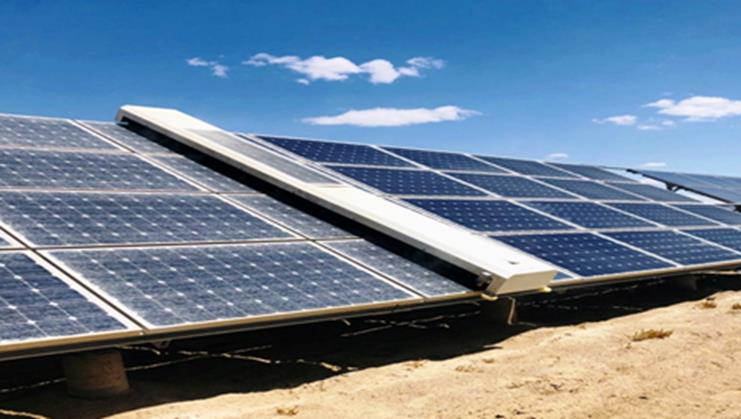La fréquence de nettoyage de robots de nettoyage de panneaux solaires Cela dépend de plusieurs facteurs, notamment les conditions environnementales, l'utilisation de panneaux solaires et le rendement énergétique attendu. Voici un guide complet pour vous aider à comprendre les intervalles de nettoyage recommandés :

Conditions environnementales
Les facteurs environnementaux varient considérablement selon les régions et ont un impact direct sur la fréquence à laquelle les panneaux solaires doivent être nettoyés.
Régions arides et poussiéreuses
Dans les zones sèches et poussiéreuses, les panneaux solaires ont tendance à accumuler rapidement la poussière. Il est généralement recommandé de nettoyer les panneaux au moins une fois par semaine afin de ne pas affecter significativement la production d'énergie.
Régions humides
Dans les zones plus humides, la poussière et les polluants s'accumulent moins, ce qui permet de réduire la fréquence de nettoyage. Un nettoyage mensuel peut alors suffire.
Après la pluie ou la neige
Après la pluie ou la neige, la poussière et les débris présents sur les panneaux solaires peuvent se mélanger à l'eau, créant ainsi des salissures qui peuvent nuire gravement à l'efficacité énergétique. Par conséquent, le nettoyage doit être effectué immédiatement après la pluie ou la fonte des neiges.
Utilisation des panneaux solaires
La fréquence de nettoyage dépend également de l’emplacement d’installation des panneaux solaires.
Panneaux solaires sur le toit
Les panneaux solaires sur les toits, qui sont exposés à divers facteurs environnementaux, doivent idéalement être nettoyés au moins une fois par mois pour maintenir des conditions optimales.
Parcs solaires au sol
Dans les parcs solaires au sol, les panneaux couvrent généralement de plus grandes surfaces. Un nettoyage manuel peut s'avérer coûteux et inefficace. L'utilisation de robots de nettoyage permet donc d'augmenter la fréquence des nettoyages. Une fréquence d'au moins une fois par semaine est recommandée pour les installations solaires au sol afin de garantir une efficacité maximale.

Impact de la propreté sur l'efficacité de la production d'électricité
Propreté et efficacité
La propreté des panneaux solaires a un impact direct sur leur rendement énergétique. Des études ont montré que des panneaux solaires sales peuvent voir leur rendement chuter de 20-25% à 10-18%. Il est donc essentiel de maintenir des panneaux propres pour maximiser la production d'énergie.
Inspections régulières
Il est conseillé de vérifier régulièrement la propreté des panneaux solaires, notamment après une météo défavorable. En cas de saleté importante, un nettoyage immédiat est nécessaire.
Performances des robots de nettoyage
Robots de nettoyage à sec sans eau
Ces robots utilisent un système de nettoyage à sec sans eau, avec des rouleaux pour le nettoyage initial et des chiffons sur le châssis pour le nettoyage secondaire. Les données expérimentales montrent que ces robots atteignent un taux de couverture moyen de 91,25%, avec un taux de nettoyage unique de 91,24%. Compte tenu de leur efficacité et de leur faible consommation d'eau, il est recommandé de les utiliser au moins une fois par semaine.
Équilibrer le coût et la praticité
Bien qu'un nettoyage plus fréquent puisse augmenter la production d'énergie, il est essentiel de prendre en compte la rentabilité et la praticité des robots de nettoyage. Un nettoyage trop fréquent peut augmenter les coûts de maintenance et la consommation d'énergie. Il est donc essentiel d'établir un programme de nettoyage raisonnable, tenant compte des conditions réelles.
Fonctionnalités d'automatisation élevées
La plupart des robots de nettoyage de panneaux solaires modernes sont dotés d'un haut niveau d'automatisation, permettant un contrôle à distance via un logiciel. Cette commodité permet d'effectuer les tâches de nettoyage selon les besoins, sans difficulté.
Conclusion
En résumé, la fréquence de nettoyage des robots de nettoyage de panneaux solaires doit être déterminée en fonction des conditions environnementales, des habitudes d'utilisation et du rendement énergétique attendu. Dans les régions sèches et poussiéreuses, un nettoyage au moins hebdomadaire est recommandé. Dans les zones humides, un nettoyage mensuel peut suffire. De plus, un nettoyage immédiat est recommandé après une averse ou une chute de neige. Pour les grands parcs solaires, l'utilisation de robots de nettoyage peut permettre une fréquence de nettoyage minimale d'une fois par semaine afin d'optimiser le rendement énergétique.
Veuillez vous référer à la méthode de calcul détaillée :Formules de calcul des effets et intervalles de nettoyage des centrales photovoltaïques